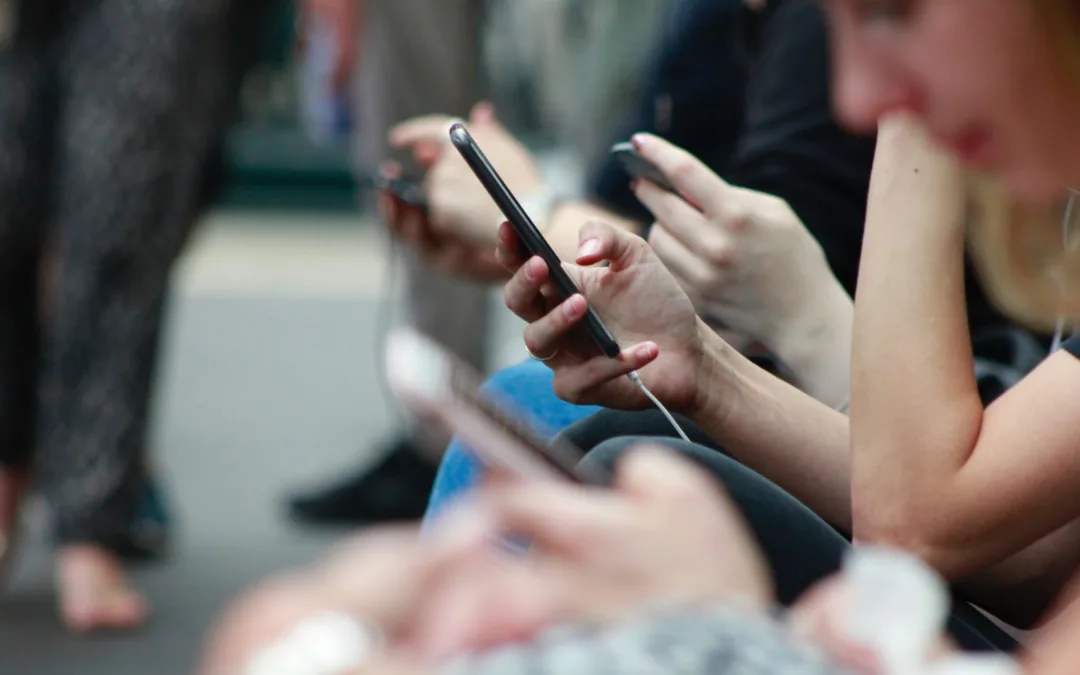2018 has been a busy year for social media.
Take Facebook, whose public battle with Russian trolls and fake news was eclipsed only by the Cambridge Analytica scandal.
Or Instagram, rolling out an update over Christmas, only to quickly reverse it within hours citing ‘technical faults’.
But for every social media slip-up, there have been plenty of strong moves.
Let’s break down some of the biggest changes to social media from 2018.
IGTV brings vertical video to the masses.
One of the biggest events of 2018 was Instagram’s rollout of IGTV.
Instagram fans can now watch full-screen vertical videos for up to an hour from all their favorite Insta creators.
You can search by name, most popular, or by interest, to discover everything from live cooking shows to Instagram’s cutest cats.
It’s long been known that video is the future for brands, and Instagram is embracing this trend wholeheartedly.
For brands, IGTV carries great potential. Big brands ranging from Nike to Netflix are using it to host influencer interviews, product launches, live event reporting, and more.
IGTV has admittedly been slow in its uptake, but it’s still early days. As brands and users get comfortable with IGTV, we can expect to see new, more exciting uses of the platform.
The ‘e-commercialization’ of social.
The relationship between social media and e-commerce is a powerful one, proving popular with consumers and fruitful for brands.
Using social media to sell products, resolve customer complaints, and conduct consumer research gives businesses a massive boon.
And 2018 saw this relationship deepen further with the introduction or expansion of a range of social selling features.
Back in June, Instagram launched its Shoppable Stories function, letting its users purchase products straight from their favorite brand’s stories.
Instagram also rolled out a dedicated Shopping channel in the Explore section. Customers can browse products in a top-down feed, clicking through to a brand’s website when they see something they love.
Alongside this was Pinterest’s upgrade of its Buyable Pins to Product Pins.
These new Pins still let customers buy products in-app, but with greater functionality. Pins lead onto related items and are more easily discoverable in Pinterest search queries.
Like Instagram, Pinterest has introduced a dedicated shopping section for you to browse products with ease.
But it’s not just front-end social selling we’re seeing. Many popular e-commerce platforms now include in-built multi-channel capabilities to sell wherever customers are — from kik to Snapchat — no app has escaped the e-commerce sales fever.
The melding of e-commerce and social boosts sales by going to where your shoppers are active most, so adopting a multi-channel approach in 2019 is a must.
Social selling is the cornerstone of any business strategy.
With the e-commerce functions mentioned above and many more on the way, 2019 looks set to be a profitable one for those brands on board.
Stories become bigger and better.
Speaking of Stories, 2018 really was the year they came into their own. As well as Instagram’s Shoppable Stories feature, the social platform also introduced a number of new Story stickers too.
The introduction of interactive countdown clock stickers lets brands build hype for product launches and events through social.
And they work perfectly with Shoppable stories too, with customers eagerly checking back into a brand story and making a purchase right there in the app.
As well as clock stickers, Instagram also introduced question stickers. You’ll likely have seen these already as your friends ask for help choosing that perfect dress or just looking for music recommendations.
For brands though, this is just another great opportunity to strengthen customer relationships.
 You can answer customer questions, share the best responses, and learn more about your shoppers.
You can answer customer questions, share the best responses, and learn more about your shoppers.
Insta stickers are Insta-addictive, so you bet your customers will be loving them in 2019.
But it’s not just the usual social media suspects who are jumping on the Stories train. YouTube also rolled out its own Stories feature for those on its Partner Program.
Lasting for seven days rather than the usual 24 hours, YouTube Stories let platform influencers strengthen their community and generate new followers for their channel.
The feature is still in its infancy (and has admittedly been met with a mixed reception). However, as it grows, your brand should start thinking about how you can use YouTube Stories to enhance your presence online.
LinkedIn comes into its own.
For many brands, LinkedIn is traditionally seen as functional rather than fun — all business, no pleasure.
But in 2018, the business-oriented social media platform let its hair down a little and showed off its fun side, and brands are taking notice.
LinkedIn started by revamping its personal profiles layout, introducing more sections for personal details and connections. It also integrated gifs straight into its Messaging feature.
So as well as making it easy for you to find the perfect Friends gif when you’re replying to that job offer, this also places the emphasis LinkedIn as a social hub, rather than simply as a digital résumé.
Alongside these more cosmetic features are the newly relaunched LinkedIn Groups. Users can now create and share videos, embed multiple images and other media, and receive real-time updates on group activity.
LinkedIn Groups are vital for building a community (for B2B and B2C businesses), so this is a welcome addition for brands.
The changes above are indicative of LinkedIn’s trajectory in 2019. It might be an authoritative, professional social network with an emphasis on careers.
But it has a light-hearted side that makes it all the more accessible, both for brands and consumers.
Social media has seen a sea change over the past year. Social networks came under greater scrutiny for the content they host.
More platforms are embracing Stories and the customization they have to offer. And brands both big and small are taking advantage of the plethora of social selling capabilities.
So what can we expect in 2019?
Ultimately, social platforms are becoming more conscious of providing a user experience that’s fun rather than functional.
LinkedIn’s introduction of social aspects such as gifs and YouTube’s new Stories indicate a move towards an increasingly playful and multimedia social landscape.
Brands should, therefore, be active on social in 2019, not passive. Create polls, regularly update your Stories, and adopt a light-hearted approach to social media.
This places your brand on the same level as your customers’ friends, making you more relatable in 2019 — no small thing in an increasingly social world.
Kayleigh Alexandra writes all about the entrepreneurial tips and hacks for Micro Startups, a site dedicated to giving through growth hacking. Stop by to read about the latest developments in the startup world, and take a moment to follow us on Twitter @getmicrostarted.![]()
You’ll love our newsletter! Sign up here.
Smarter Marketing Starts Here
Subscribe to receive the latest AI marketing and CTV ad tips that help you stay ahead - delivered straight to your inbox. Join our newsletter!

